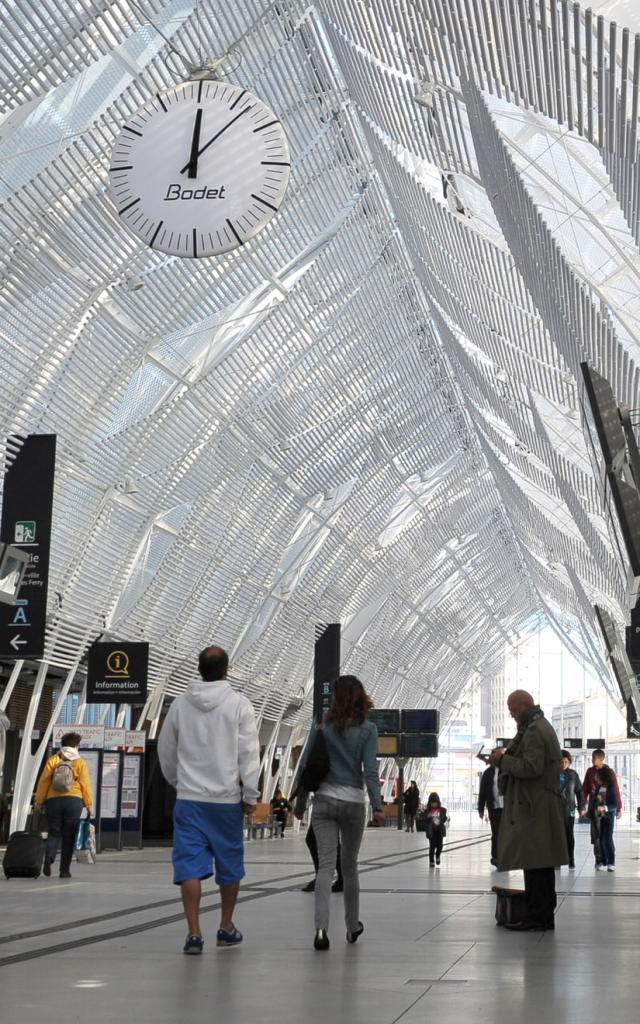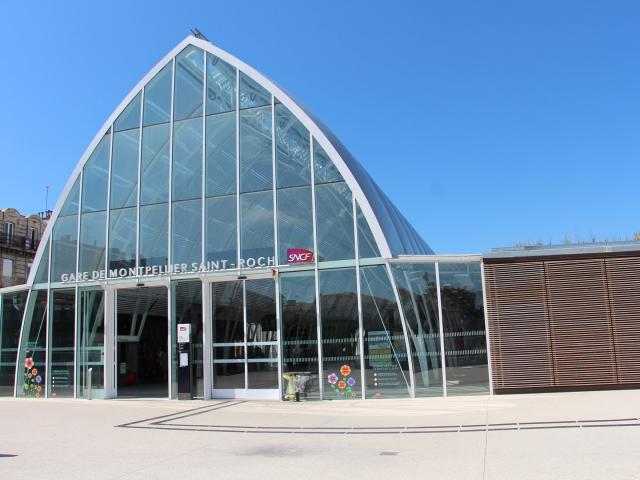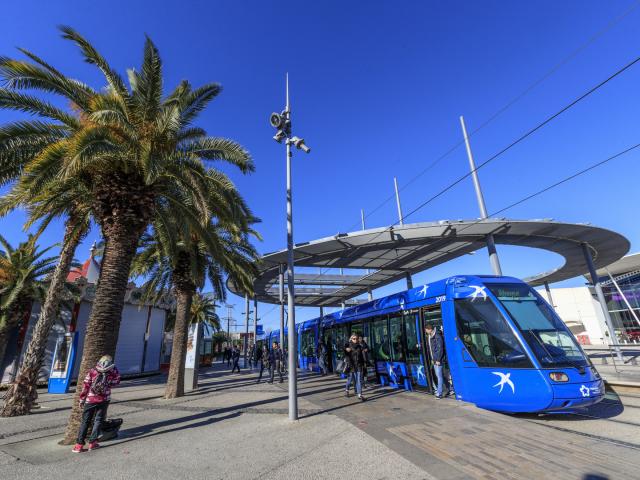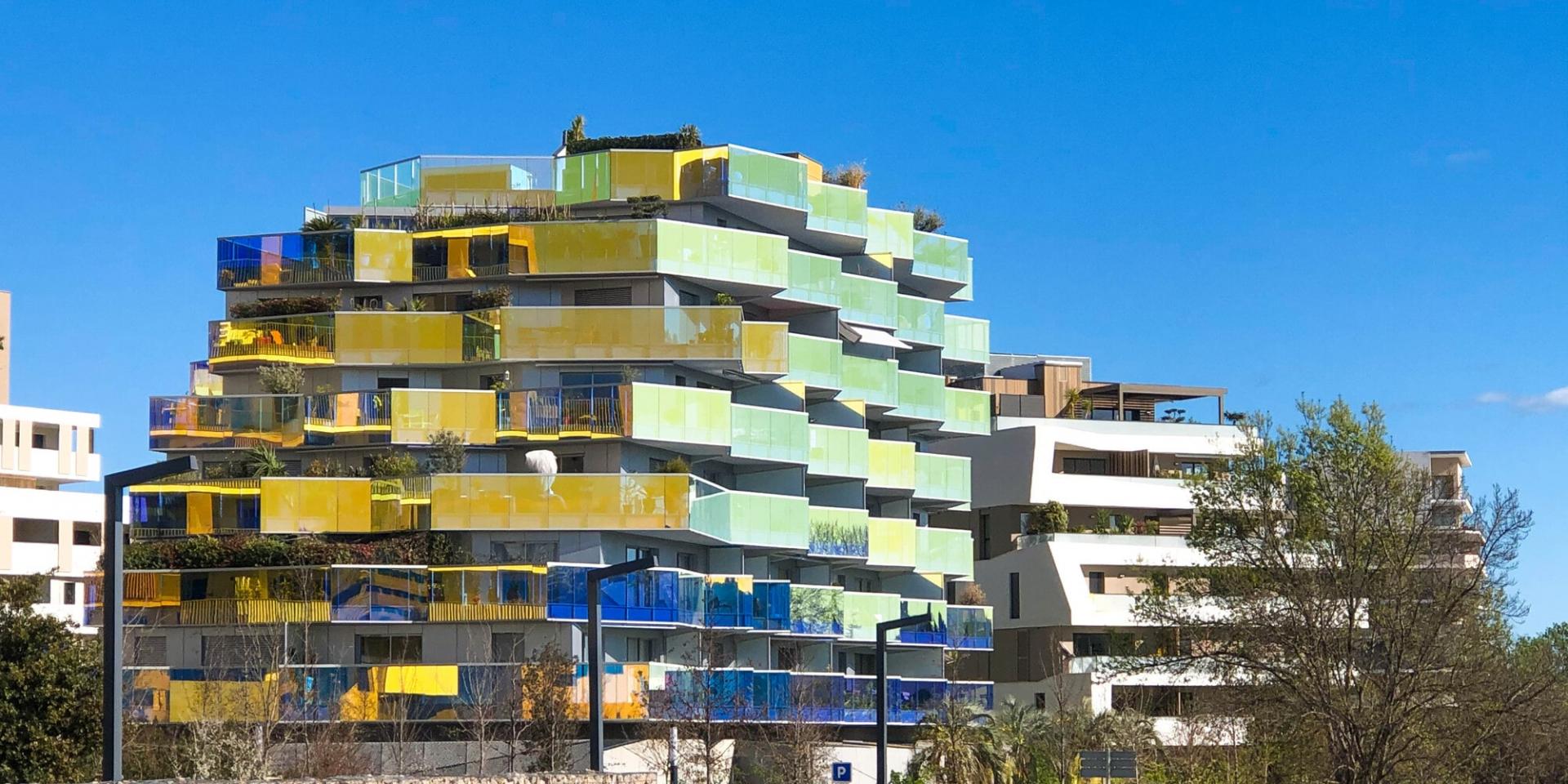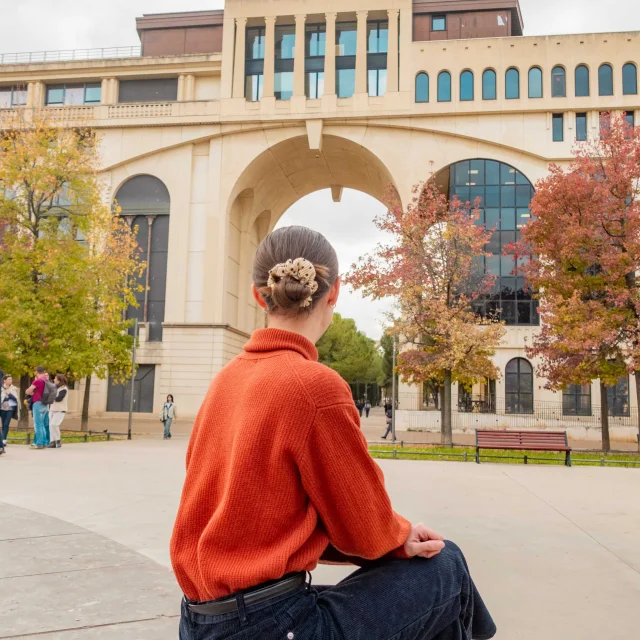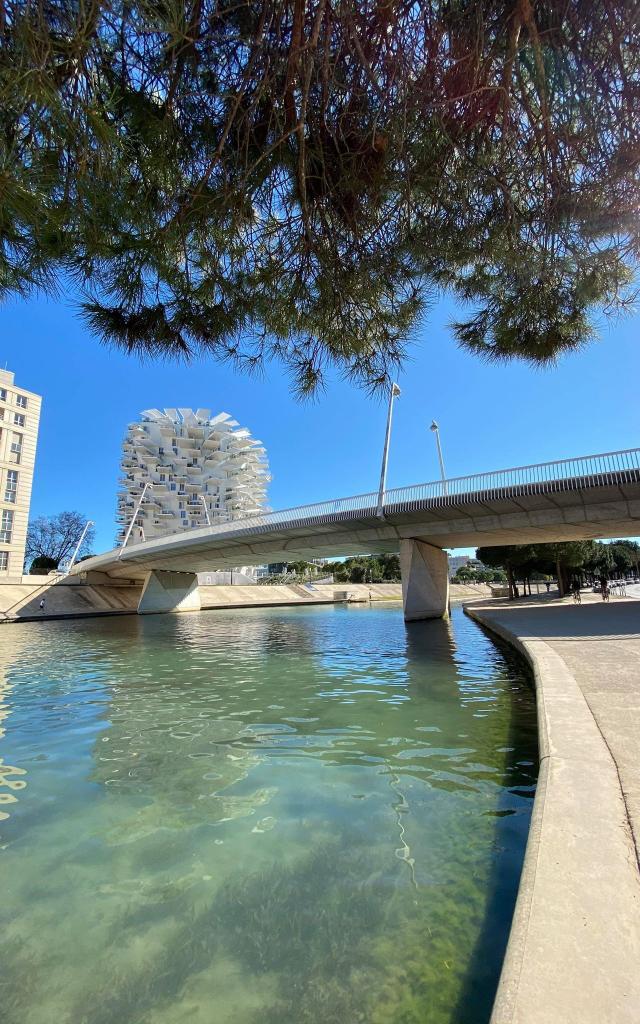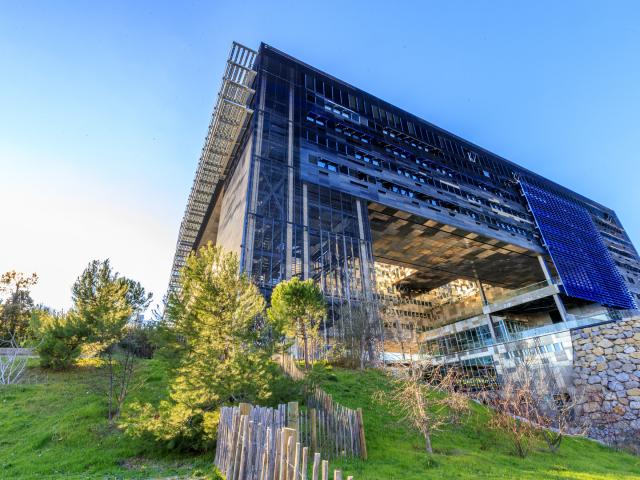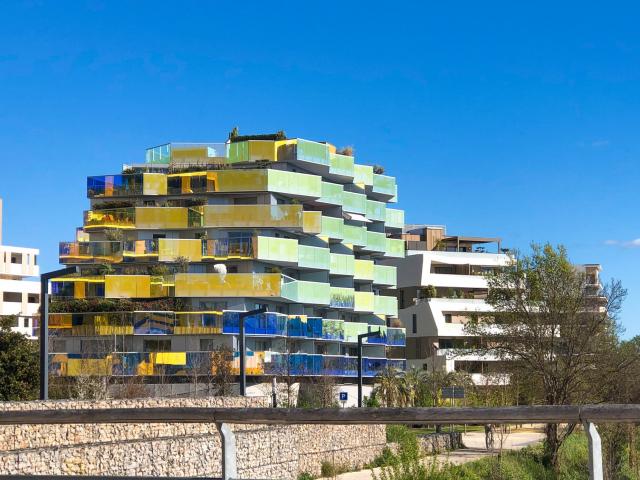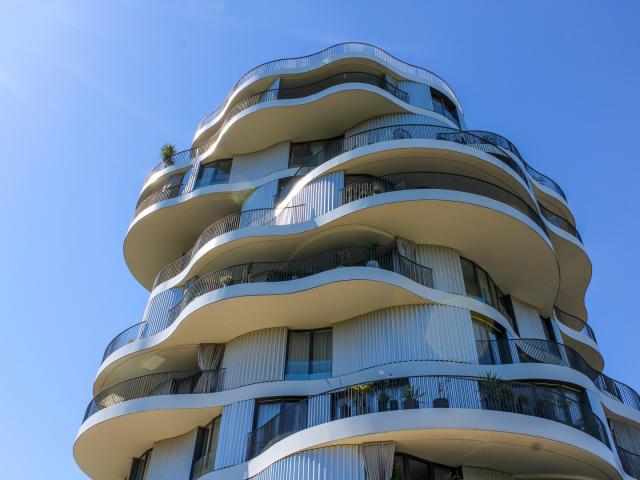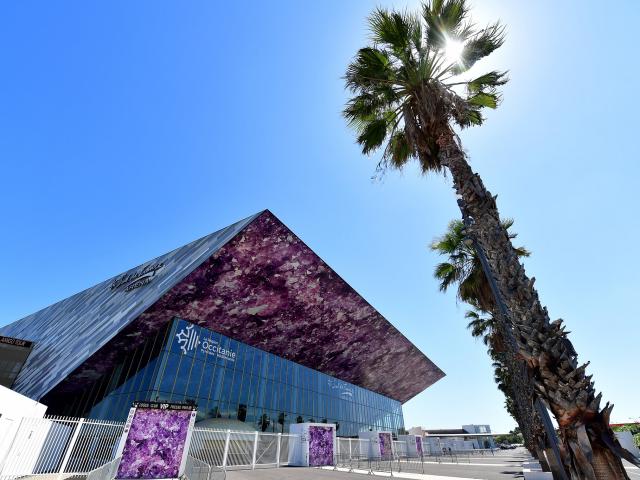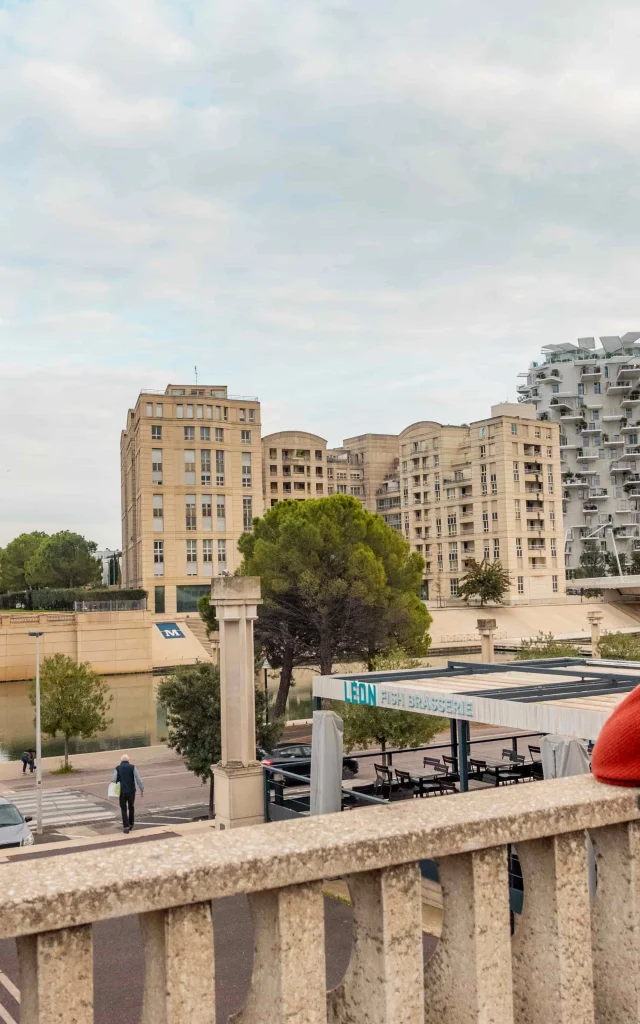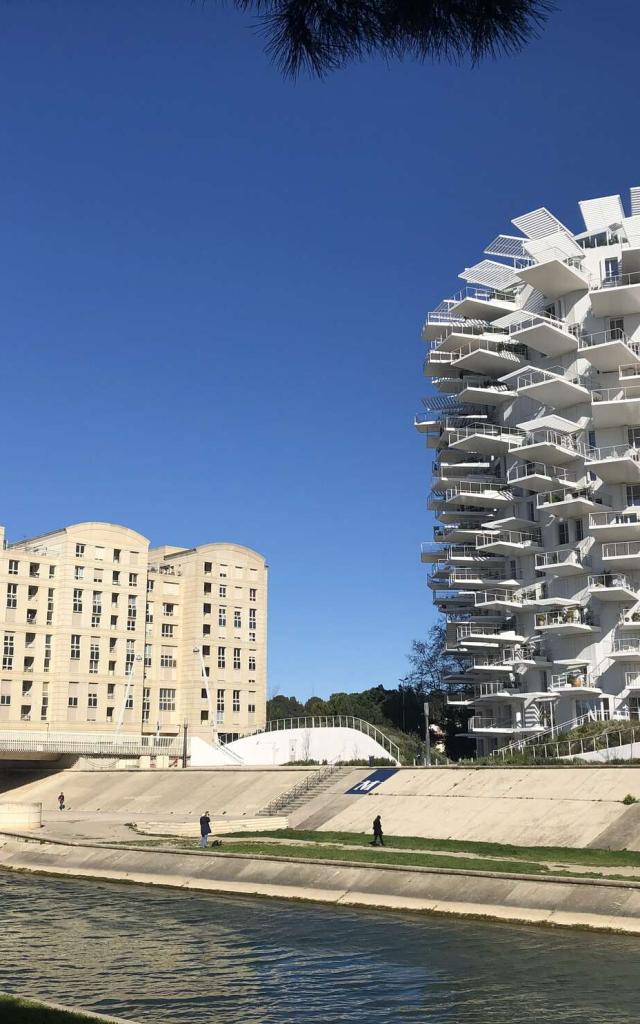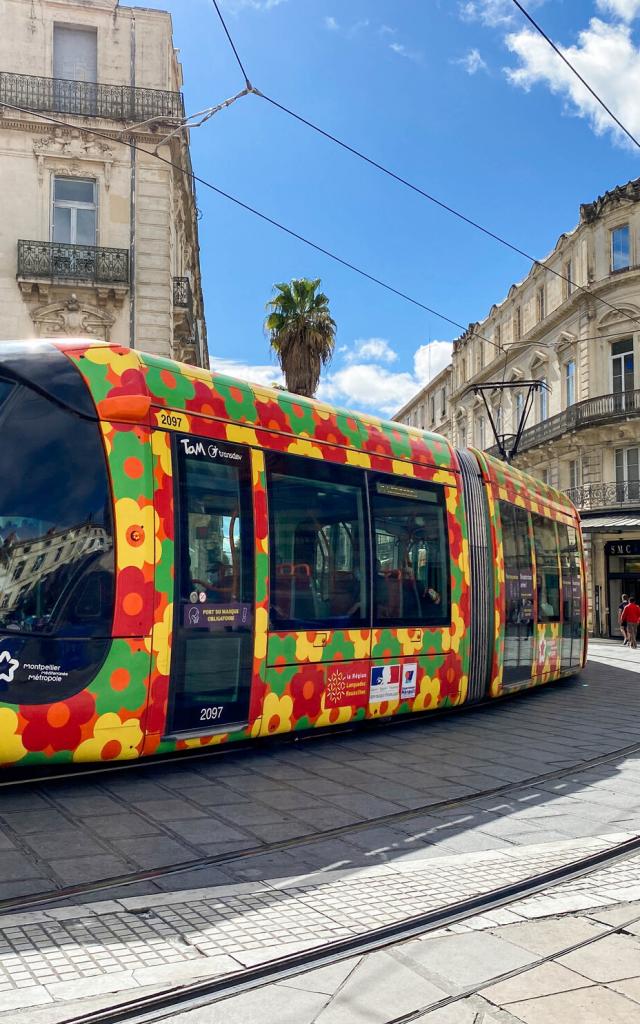Saint-Roch Train StationStart
Rendez-vous with design
I admit, my mission is fairly unique: I’ve come to see the side of Montpellier that many may miss. I’m into the city’s trendy architecture. It’s so true to its time.
Set off from the white nave
It’s 9.53am when I get off the train this morning. I’m so pleased to be here, I’ve been looking forward to it! I take the lift to the station’s concourse and what a surprise! A kind of huge nave with white walls looms above me. It’s like being in a future-forward church, which is fairly unique in itself!
A design-led tram
Now I’m on a blue tram dotted with white swallows, it’s a first for me. There are more in gold, with green and orange flowers… that’s pretty unique too.
